






Each agricultural operation is unique and provides opportunity for producers to learn from one another. Luke Bellar, Mound Valley, and his brothers Ben and Ethan Bellar, Howard, entered an equal thirds partnership for their row crop operation. The Bellar Brothers raise soybeans, corn and soft winter wheat in southeast Kansas.
Lessons off the family farm
Luke earned a bachelor’s of science degree in Agribusiness from Fort Hays State University in May 2015. After completing his degree, he returned to his family’s operation to manage their finishing hog operation. Luke bought his first feeder pigs in the fall of 2015 and rented the barns from his dad. After approximately a year, he made the tough decision to find work on another operation to further his knowledge.
Luke saw an ad in the High Plains Journal for a farmhand job in Plymouth, Nebraska, on a row crop and finishing hog operation and, after a visit, he accepted the position and started in March 2017.
“I thought I knew it all when I moved there, but I didn’t, I learned so much,” Luke says. “It was a very different twist to my normal southeast Kansas farm style and it was really cool to see how irrigation works.”
Luke notes that not only did he
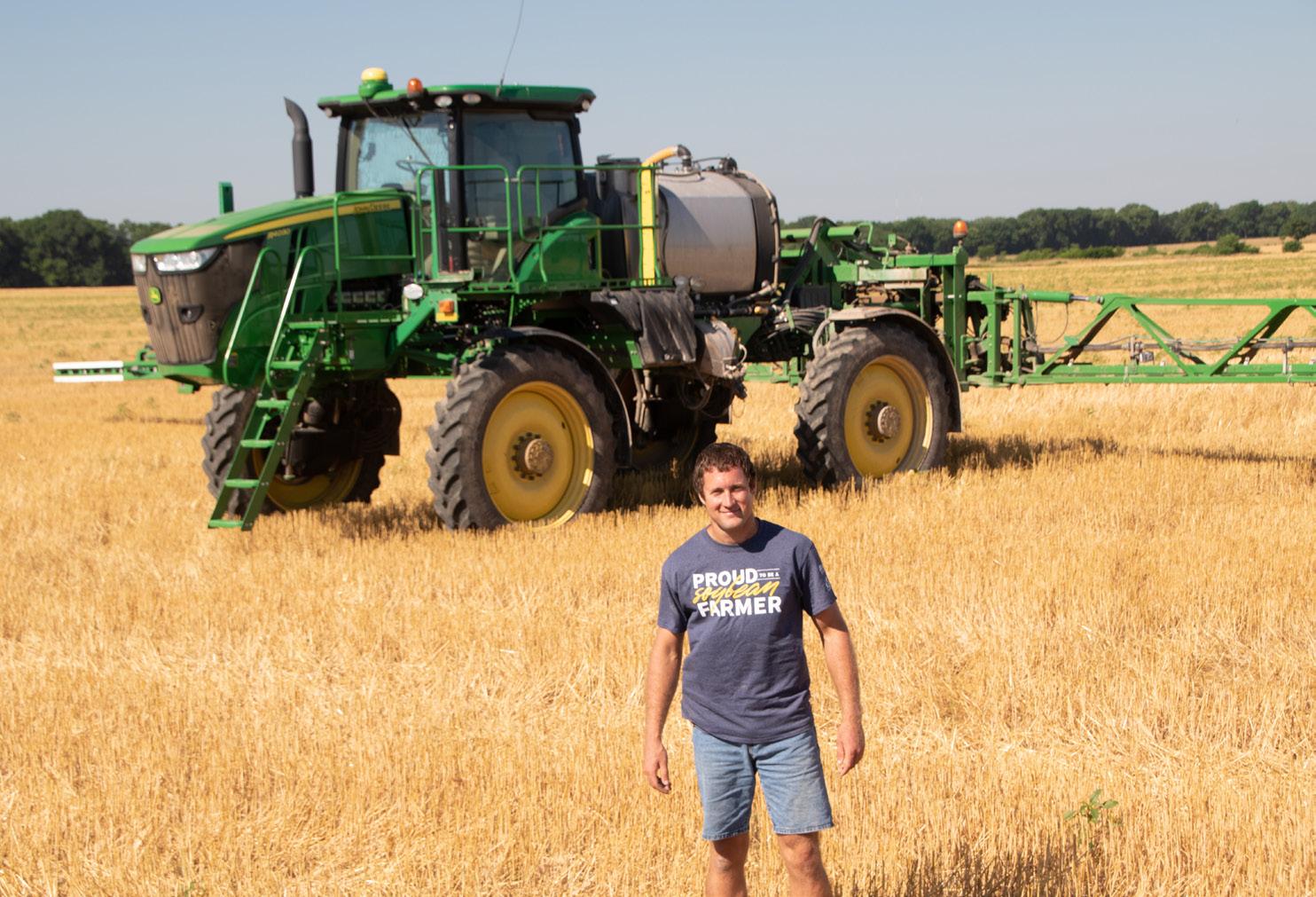
learn a lot about farming, he developed skills on building relationships.
While being in Nebraska instilled knowledge and numerous life-long skills, Luke knew he was ready to take what he learned and move closer to home after a year and a half.
Luke’s parents attended a business trip in Mexico, and what came of it altered his life. While there, his parents met a Mound Valley farmer who wanted to retire. Over the summer and fall of 2018, Luke did many interviews with the retiring farmer to line out agreements before leaving his Nebraska job and moving back to Kansas.
The original plan was for Luke

to be an employee for two years and then move into a 50/50 partnership for the next five years and after seven years, he would own 100% of the operation. Things quickly changed after the retiring farmer had medical issues and the agreements had to be updated.
The farmer’s wife was heavily involved in the operation and continued to stay involved as they reached a new agreement. For the first two years, the wife remained the main decisionmaker on inputs and grain marketing and Luke was doing the physical work, planting, spraying, combining and hauling grain.
Luke rents the land, bins and barns, but is now the sole decision maker on the operation. Continues on page 3
PRESIDENT’S MESSAGE by Scott Gigstad, Everest
Hello, Kansas Soybean Farmers. If someone could tell me how to put the brakes on summer, I would certainly appreciate the advice! For me, once the 4th of July is over it seems like the next stop is the kids going back to school. Before we get too far along on summer, I would like to back up to visit about this spring.
Volume 29, Issue 1 | July 2024
is published bi-monthly by the Kansas Soybean Association
1000 SW Red Oaks Place, Topeka, Kansas 66615-1207 phone: 785-271-1030 | fax: 785-271-1302
877-KS-SOYBEAN (877-577-6923) www.KansasSoybeans.org | info@kansassoybeans.org
2024 Board of Directors
District 1 Brett Neibling, Highland
District 2 Brice Bunck, Topeka
District 3 John Pracht, Westphalia
District 4 Matthew Atkinson, Columbus
District 5 Michael Musselman, Clifton
District 6 James Moreland, South Haven
District 7 Teresa Brandenburg, Russell
At-Large Jared Nash, Parsons
At-Large Brandon Geiger, Highland
Atchison County Scott Gigstad, Everest
Brown County Greg Strube, Horton
Cherokee County Roger Draeger, Galena
Doniphan County Josh Falk, Robinson
K-State Research & Extension Sarah Lancaster, Ph.D., Manhattan
K-State Agronomy Raj Khosla, Ph.D., Manhattan
Kansas Soybean Processors Jessie Smith, Emporia Kansas Soybean Commission Ron Ohlde, Palmer
American Soybean Association Charles Atkinson, Great Bend
American Soybean Association Andy Winsor, Grantville
Young Leader Adam Phelon, Melvern
Young Leader Daniel Anderes, Junction City
Young Leader........................................................................Ben Bellar, Howard
Young Leader................................................................Ryan Delaney, Osborne
2024 Executive Committee
President Scott Gigstad
1st Vice President Brett Neibling
2nd Vice President Jared Nash
Secretary Michael Musselman
Treasurer Brice Bunck
Chairwoman Teresa Brandenburg
Staff
Chief Executive Officer
Hopefully, everyone had a safe spring and planting went well. I know there are still dry areas of the state but after visiting with various farmers across Kansas, it sounds like some of the dry places are receiving moisture. I have visited with farmers that had positive wheat yield reports and others that had a tough wheat harvest due to drought and storms. Here in the Northeast corner, it has been a fairly wet spring and early summer. While I postsprayed soybeans, I noticed many of our tile outlet terraces broken over, drowned out areas and ditches washed through the fields. I hope fall brings a window of opportunity this fall to complete some conservation work and repair the damages.
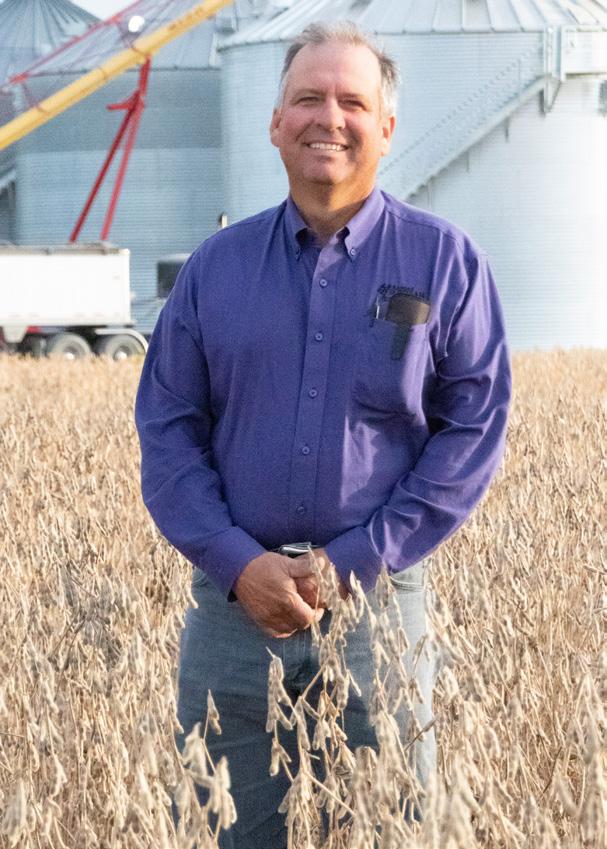
Grain Belt Express power line angling from the Northeast corner down to Dodge City. There is uncertainty in how this will play out or what it even means. It is, however, something that would impact Kansas agriculture and needs to be monitored.
Kaleb Little
Director of Field Services Dennis Hupe
Director of Communications Amanda Manville
Director of Operations and Accounting Adam O’Trimble
Director of Programs and Outreach Jancey Hall
Communications and Membership Specialist.....................Josey Mestagh
Accounting Manager Meghan Bechard
The Kansas Soybean Association board members and staff stayed busy this summer. The corporate tour meeting was in Northeast Kansas this year. It is always a fun time to catch up with members and sponsors. In mid-July, a group of KSA board members traveled to Washington, D.C. for the American Soybean Association’s summer meeting. Board members conversed with Kansas legislators’ staff about current priorities. One of the highest priorities is the farm bill; we primarily discussed increasing funds for market programs. Unfortunately, no one seems super optimistic it will pass before the election. We also talked about the renewable fuel volumes and setting standards for imported used cooking oil. Another item to keep a close eye on is the
As I mentioned earlier, it is an election year, and I am already flooded daily with political ads and seeing signs start to pop up. Even though election years may be exhausting and frustrating we must remember we are blessed to live in a country that we can vote in.
As always, the Kansas Soybean Association is here for you — our members and corporate sponsors. Please reach out to me or the office if there is anything we can do for you. I hope you all have a safe, fun and prosperous summer and receive timely rains! I look forward to crossing paths with as many of you as possible. Be safe! God Bless.
All equipment was priced in January 2021 and a payment plan was outlined to spread out over the next six years to help fully transition ownership.
“I grouped equipment pieces together to identify an agreed upon price and made these decisions based on when I thought I would trade in the equipment for John Deere,” Luke says. “I knew I wanted to trade in the planter tractor in year three, so I made that the payment in year two so I could physically own the equipment and not just own it on paper.”
The Bellar Brothers partnership was formed with longterm thinking in mind. All three started out equally owning nothing and over the past four years, they have built equity in the Mound Valley farm. Their parents’ long-term goal was for the three boys to farm their place, but the partnership was formed so all felt they were treated fair and equal.
One factor behind the partnership was to set them up for success for succession planning when the time comes.
Having a partnership mitigates some of the risk if any of the brothers got into a sticky situation, and it would protect the farm. Once their dad retires, the oldest and youngest brother will assume active manager po-
sitions at the Howard operation and Luke will continue his role as active manager in Mound Valley.
Luke states that having 70 miles between the two operations lowers the chance of both farms having crop loss. Since the Bellar Brothers are a row crop only farm and do not have livestock, the distance between farms is a form of validation that if one crop doesn’t do good, the other most likely will do good.
“We can’t share equipment, but the advantages outweigh the disadvantages,” Luke says.
When asked if the Bellar Brothers used any educational material as they formed the partnership, Luke jokingly responded that him and his brothers aren’t big readers, and they just want to do it. In all seriousness, it came down to what worked best for them. Luke says they did explore how others did it, but the key was to have transparent conversations and a lot of give and take. When it came down to the details, each individual would jot down ideas and trade papers, then find middle ground to agree upon.
“The partnership helped us all have a clear mind in the decisions; we all came in with nothing and had the chance to succeed or fail at the same rate,” Luke says. “Doing it early was the right move and I would do it again.”
When posed with the question of why he enjoys farming, Luke says, “When I was a kid, I wanted to be a lot like my dad, and I still very much do. I have seen his success and I do my best to mimic him.”
Luke’s father plans to retire within the next couple years, meaning they will soon start the process of succession planning for his operation and to ensure the partnership is still working.
The new Bartlett soybean crush plant and potential Azure renewable jet fuel plant could bring enormous potential to Luke and his brothers.
Luke states the chicken markets in Arkansas and Oklahoma help drive southeast agriculture, by serving as an easy home for soybeans and corn. He hopes the plant will produce large volumes of aviation fuel using Kansas-grown soybeans. He is optimistic that the addition of this plant will help promote the use of locally grown crops and drive rural agriculture.
“Without the work of the Kansas Soybean Association and other organizations pushing for higher renewable fuels volumes in the legislature, there would not be a demand for more crush plants,” Luke says. “We are fortunate to have acquired one in southeast Kansas.”

I grew up on my family’s farmstead in Robinson where we grow soybeans, corn and hay and raise cattle. My wife, Sarah, and I live near the farmstead with our four children, Kayte, sophomore; Breckan, eighth grader; Jace, fourth grader; and Paisley, second grader.
I attended Benedictine College
and earned a bachelor’s degree in finance and economics. Currently, I am the Vice President at Bendena State Bank in Highland. Outside of my full-time job, I help on my family’s operation, primarily as labor. I also serve on the Doniphan County fire board and am involved in my kids’ sports activities.
My involvement with the Kansas
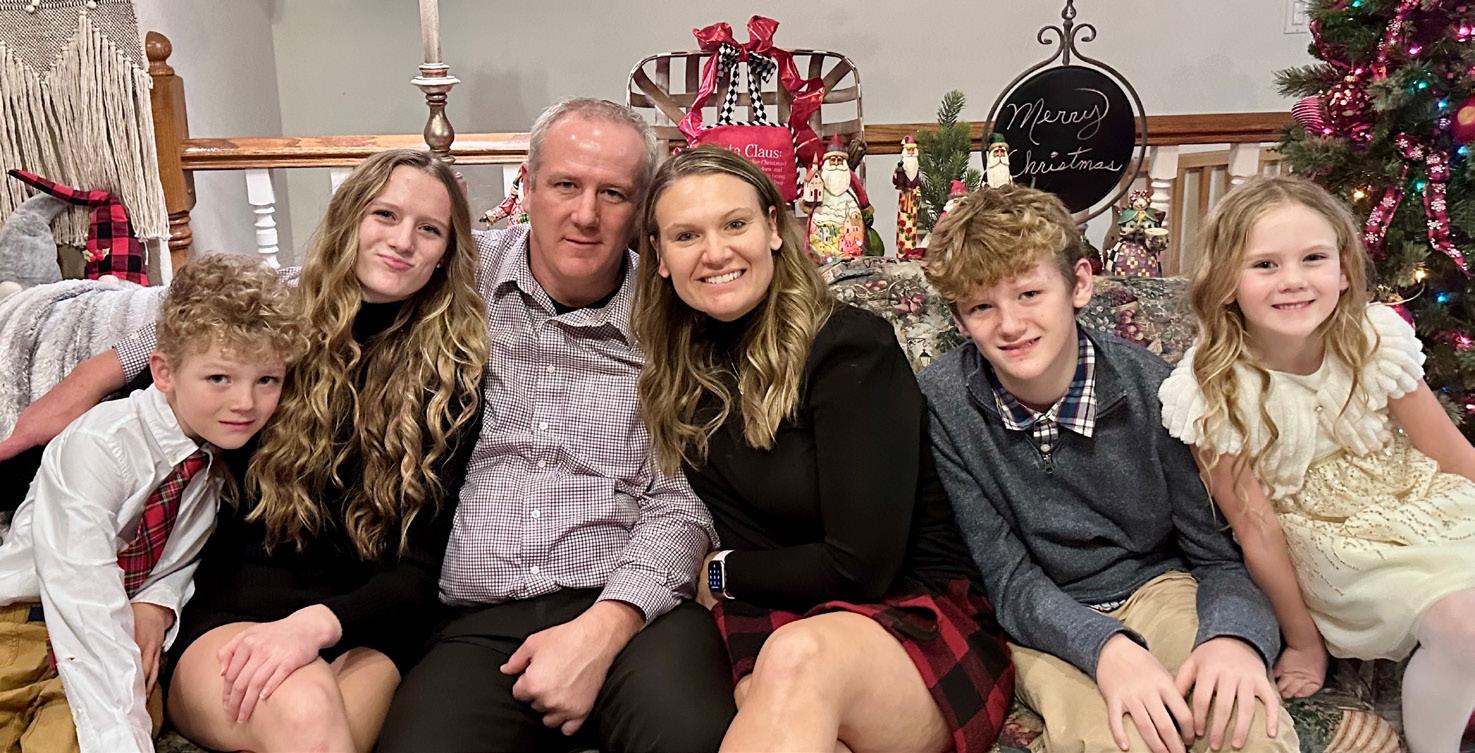
Soybean Association started when Kyle Jeschke, former Doniphan County representative, asked if I would be interested in what is now the Corteva Young Leader Program. After finishing the application process, I was fortunate enough to be accepted and participate in the 2011 class. Upon completion of the program, I held a Young Leader board seat and then advanced to the Doniphan County representative seat in 2016
From my experience working in finances, I see the value of KSA’s work advocating for not only the soybean industry, but all of agriculture. KSA is critically important to soybean farmers because the policy work lightens financial burdens through safety nets and keeps inputs affordable. Additionally, new markets and uses impact the grain markets, which are factors in my line of work.
Sen. Roger Marshall (R-KS) introduced a sign-on letter which requests information about what the Environmental Protection Agency, U.S. Trade Representative, U.S. Department of Agriculture and U.S. Customs and Border Protection are observing in terms of restrictions on used cooking oil imported from China and how they plan to ensure these imports are high quality and not mixed with other products. Without a system to check these imports, they are scoring lower on the carbon intensity scale, making them look more appealing than soybean
oil to purchasers.
The annual use of imported UCO in the U.S. has increased from less than 200 million pounds in 2020 to over three billion pounds in 2023 to meet the growing demand for renewable fuels. It may continue to amplify when clean fuel tax credits from the Inflation Reduction Act are fully implemented. Marshall says he is concerned that without clear and concise standards, imported UCO may be fraudulent and not work toward a more sustainable system.
While there is a concern about
significant increases in UCO imports for domestic biofuel production, there is no evidence that fraudulent UCO is only coming from China or that any is fraudulent.
The increase of UCO imports may cause concern, making it important for policymakers to set standards and restrictions on UCO from any country.
While ASA supports efforts to ensure the validity of UCO imports, the organization is concerned about the anti-China rhetoric in the letter and remains neutral at this time.
After budget restraints, USDA funding was drastically cut by $24.2 million. Following internal reductions, like employee training and travel, it was still necessary to reduce programs by $8.05 million. According to Doug Bounds, Kansas State Statistician, the appropriation was received March 2024nearly halfway through USDA’s fiscal year – meaning opportunities for the necessary cost avoidance was limited to items and projects that had not already been started or completed. This resulted in the cancellation of the July Cattle Report and the discontinuation of the Cotton Yield Objective Survey and all County Estimates for Crops and Livestock, conducted by the National Agricultural Statistics Service.
“The decision to reduce programs and reports was not made lightly, but was necessary
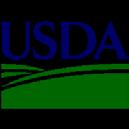
to meet the appropriate funding level,” Bounds says.
Lawmakers determined this decision could be detrimental to transparency and deprive producers of necessary agriculture insights. Rep. Tracey Mann (KS-01) and Sen. Jerry Moran (R-KS), along with Rep. Jim Costa (CA-21), penned a letter to Secretary of Agriculture Tom Vilsack urging him to reverse the decision.
NASS data is used widely across the agricultural industry. This data is critical for producers to receive accurate, unbiased information when implementing policies and programs. Agribusinesses use the data to ensure products and services are available when needed, and economists and market analysts rely on the data to support producers.
Producers may face more un-
certainty when determining harvest times and markets without these reports. While the county estimates will not be available, agriculturists can use data provided by USDA’s Farm Service Agency and Risk Management Agency on acreage and yield along with the NASS Cropland Data Layer, a geospatial product identifying planted acreage across the country, to evaluate crop area and yield.
“NASS levels the playing field by providing all data to everyone at the same time, ensuring that no one has an unfair advantage,” Bounds says. “NASS is dedicated to providing data to meet the needs of all users, and should sufficient funding be available in the future we will make every effort to restore these valuable products.”
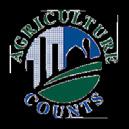
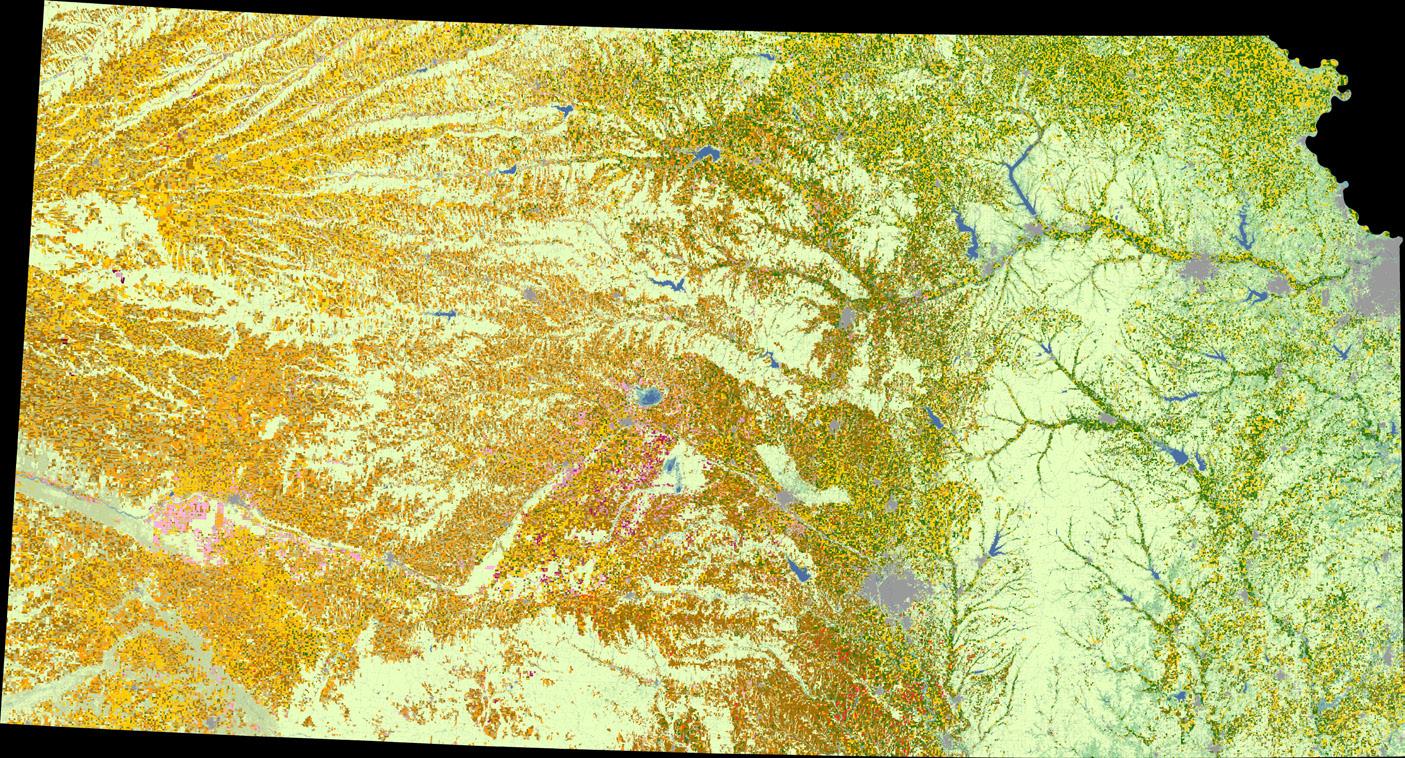

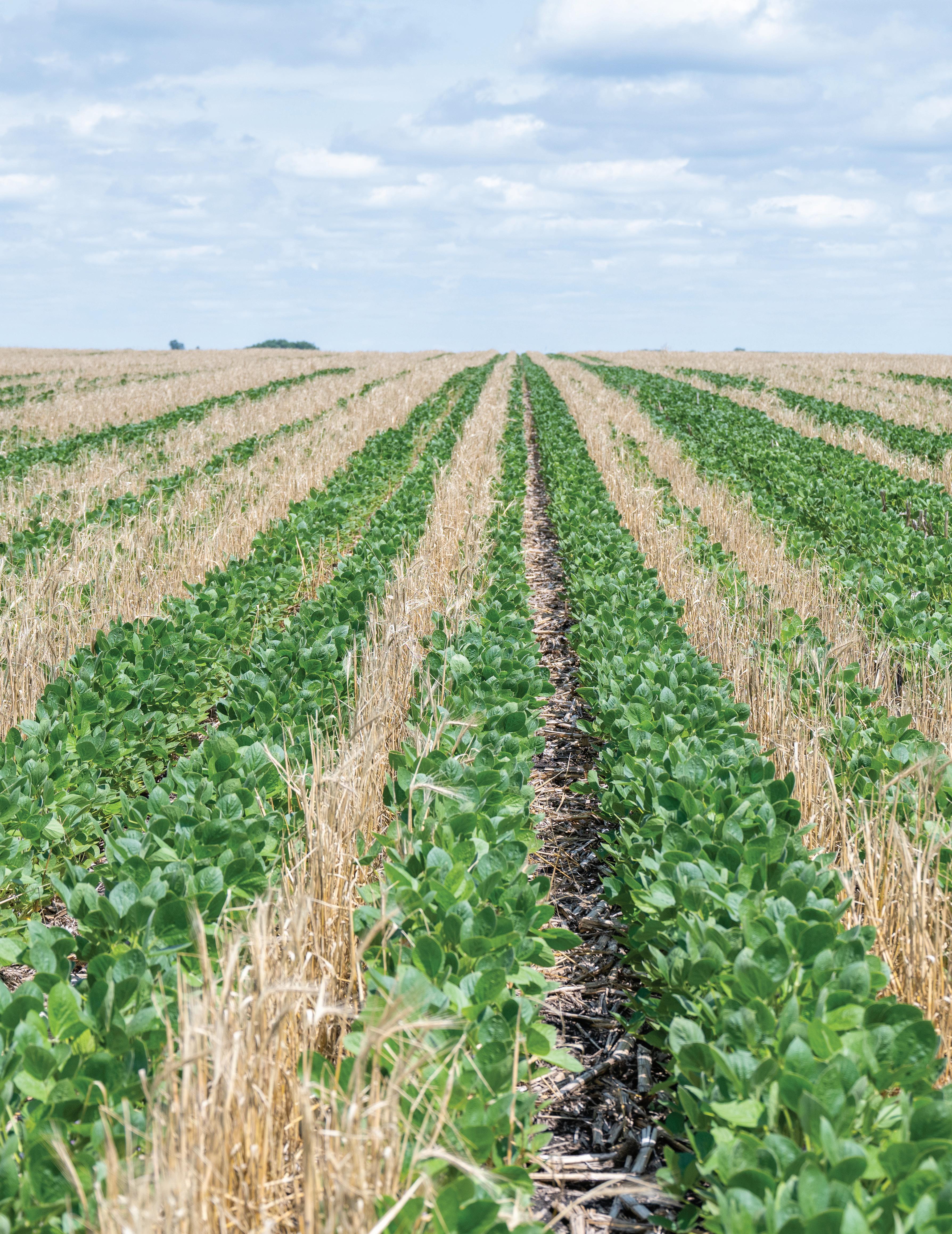
Through the soy checkoff, U.S. soybean farmers are investing in new production practices to continuously improve their sustainability while protecting the air, water and soil for generations to come.

The yearlong, deliberative process of the 2024 Farm Bill, took a significant step forward when the House Agriculture Committee completed their markup of the Farm, Food, and National Security Act of 2024 and passed it out of committee on May 24, with support of all Republicans and four Democrats. The Senate Agriculture Committee completed their framework for the 2024 farm bill and release it May 1, calling it the Rural Prosperity and Food Security Act, but it has not been passed through the committee.
The American Soybean Association has been working diligently to advocate for the pressing needs of soybean farmers and communicate how vital it is for U.S. soybean farmers to have a farm bill passed this year.
While the House and Senate version differ, both reflect the needs of some ASA policy priorities including expanding and improving farm safety net programs, doubling the Market Access Program and Foreign Market Development funding as well as excluding anti-checkoff language.
“It is a welcome development to see the progress toward a new and improved farm bill, and we are hopeful that meaningful, bipartisan legislation will be advanced this year. Farmers face significant headwinds –including an unfavorable farm income outlook and volatility in access to export markets –and strengthening the farm bill is more important than ever,” Josh Gackle, ASA President and North Dakota soybean farmer, says.
Farmers faced numerous hard-
ships during the Great Depression and Dust Bowl and suffered consequences after both historical events. Additionally, the first World War dropped crop prices. The Agricultural Adjustment Act of 1933 was the first farm bill and created programs to reduce surplus and raise crop prices.
In 1938, the farm bill was updated to address the ecological crisis of soil erosion by compensating farmers for planting soil, supporting crops and reducing production of crops that contribute to soil erosion. Additionally, in that bill, Congress created a more permanent process through the requirement to update farm bill legislation every five years. The five-year cycle allows legislators to reevaluate the industry, current events and change of government. In 1973, the farm bill expanded its coverage to consumers with funding for food and assistance programs, making it an omnibus bill.
Each farm bill has a unique title, like the Agriculture Improvement Act of 2018 or the Food and Agriculture Act of 1965. Farm bills have 12 chapters comprising rural development, commodities, conservation, nutrition, research, extension, and related matters, forestry, energy, horticulture, crop insurance and miscellaneous.
The development process for the farm bill can be long and extensive, as indicated by numerous delays in passing the current iteration.
Multiple factors are causing the standstill of a farm bill being passed. Senate Agriculture Committee chairwoman Debbie
Stabenow (D-MI) and House Agriculture Committee chairman Glenn “GT” Thompson (R-PA) have opposing views.
“I hope for unanimous support in this endeavor to bring stability to producers, protect our nation’s food security, and revitalize rural America,” Chairman Thompson, says.
Chairwoman Stabenow states that the $28 billion cut in SNAP sought in the House proposed draft is a “hard red line” for her and believes her bill would increase reference prices by at least 5% for major commodities, making it easier to trigger crop subsidy payments.
The 2024 Farm Bill is not the first to be impeded. Since the decision to update it every five years, six previous farm bills have been delayed in their approval. The budget for individual articles and titles is not fully outlined until it is signed into law. This can cause concern for the delay in an approved farm bill, as the federal government operates on a fiscal year from October 1 to September 30. Some farm bill programs – called entitlements – are written to where their funding is guaranteed every year.
According to the National Sustainable Agriculture Coalition, if a final bill or continuing resolution is not signed into law before October 1, the government shuts down without funding to operate.
ASA commends chairman Thompson for progressing the Farm, Food and National Security Act of 2024.
“We appreciate that Chairman Thompson heard clearly the
concerns and needs of soybean farmers and addressed those in the bill his committee approved,” Gackle says.
As inflation and costs of production continue to rise, having protection for farmers is important. Thompson’s version covers the increase of support for the Price Loss Coverage and Agriculture Risk Coverage programs, modernizes marketing loans and sugar policy, allows authority to expand base acres to include producers who cannot partake in PLC and ARC, bolsters dairy programs to continue providing vital assistance and enhances standing disaster programs and expands eligibility for assistance.
The Market Access Program and Foreign Market Development program have not received a funding increase in 20 years. These programs are designed to make trade more efficient by sharing the costs of overseas marketing and promotional activities and to create, expand and maintain long-term export markets for the U.S., respectively.
Thompson’s high-level overview says that by expanding the reach and impact of the MAP and FMD program, the 2024 farm bill will mitigate global food insecurity while providing U.S. producers new markets and improving local economies.
The U.S. Soybean Export Council and United Soybean Board are carrying out the tasks to expand markets for soybean farmers. Jared Nash, Parson soybean farmer, experienced this work firsthand during a trade mission to Colombia.
“As a farmer, I thought that trade among countries just happened. I didn’t realize how
much work and cooperation it takes among the different trade organizations to even open the doors to start the discussion of trade with other countries,” Nash says. “Without the necessary funding there is no way to get the diplomatic wheels turning and the ball rolling to open the trade doors.”
Thompson’s version covers improvements to other areas including rural development, energy, forestry, credit and more.
Chairwoman Stabenow (D-MI), Senate Agriculture, Nutrition and Forestry Committee Chairwoman, believes her proposal reflects bipartisan priorities to keep farmers farming, families fed and rural communities strong, according to the committees press release.
Stabenow released an overview of her priorities for the Rural Prosperity and Food Security Act. The draft summary caused for investments to strengthen the farm safety net, help families working hard to make ends meet and improve the quality of life in rural communities.
One similarity between the House bill and Senate framework is improving emergency disaster assistance to the PLC and ARC programs. According to Stabenow’s bill, all major covered commodities would see at least a 5% increase in reference prices, and many would see 10-15% increases.
The National Sustainable Agriculture Coalition applauds Stabenow’s note of major investments for conservation programs for farmers and ranchers.
“I have always believed there is a bipartisan path forward if we
maintain the long tradition of respecting the needs and interests of the broad farm and food coalition. This has always been the foundation of a successful Farm Bill,” Stabenow says.
Stabenow plans for improvements in other areas, like rural development, energy, forestry, credit and more.
The process is currently at step four of nine in the development process — consideration in committees. A complete farm bill by the end of summer is not likely, but agricultural organizations believe it is promising to see completion by the end of 2024.
The August recess is quickly approaching, and with that poses the question of whether the industry can come together to break this stalemate and pass a farm bill in 2024.
“It is important for the farm bill to be useful to farmers because they are the foundation of the food system for not only our country, but the world,” Teresa Brandenburg, Russell soybean farmer, says. “American farmers must have the support and freedom to operate in a way that works best for their individual farm, to ensure continued production of safe and affordable food.”
KSA continues its work on behalf of the 12,000 soybean farmers in Kansas and recognizes it is critical that the needs of soybean farmers are addressed in the bill. To gain a further understanding or to express your opinions about the farm bill, contact Dennis Hupe, hupe@kansassoybeans.org.
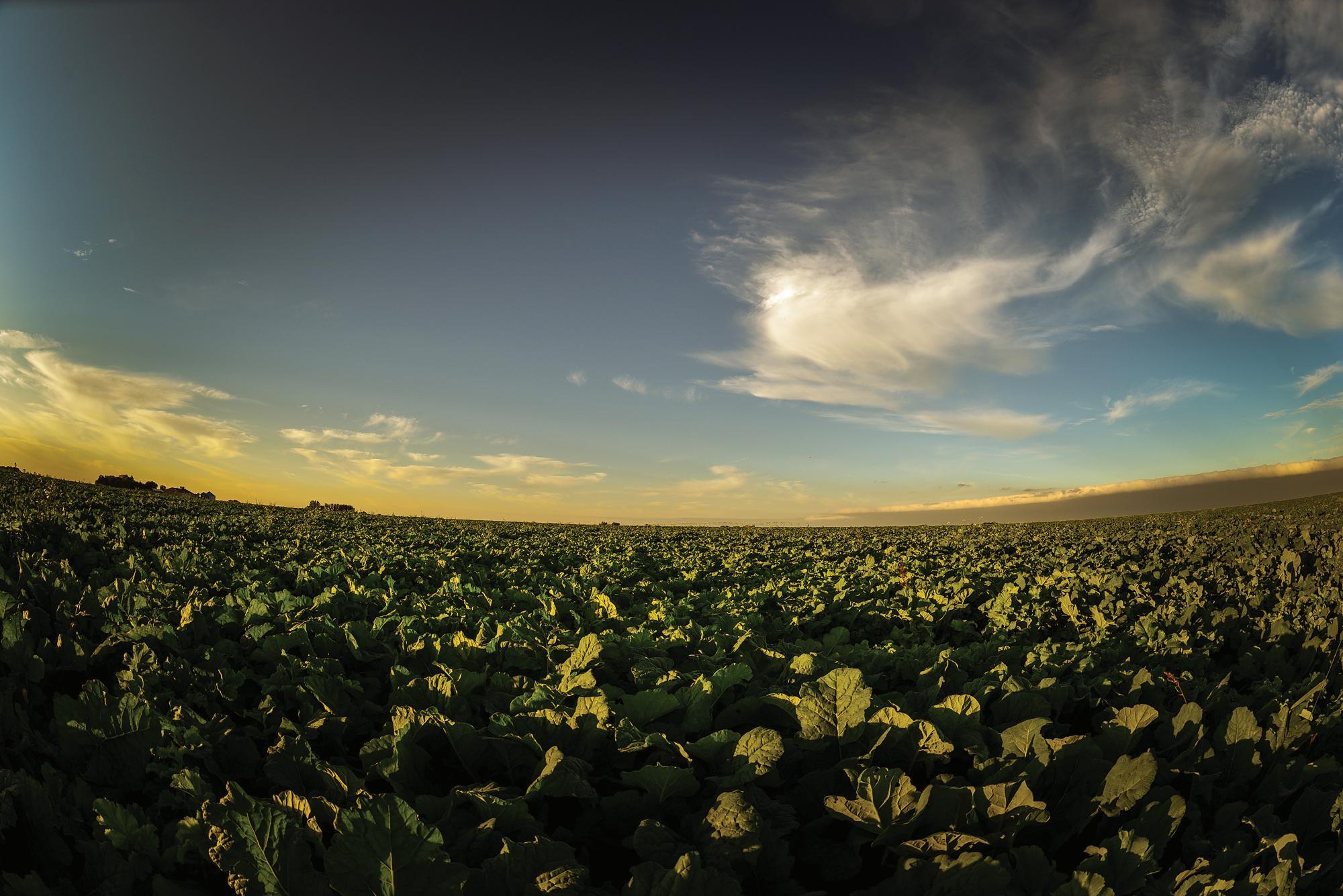
To help cover the start-up costs of cover crops, Farmers for Soil Health o ers financial assistance of up to $50/acre over a three-year period.
Enrollment in Farmers for Soil Health provides access to an exclusive future marketplace connecting farmers to top-tier supply chain partners that are focused on sustainability.

Each state has dedicated on-theground technical advisors to provide research-based information and educational resources to aid in the transition of your field.
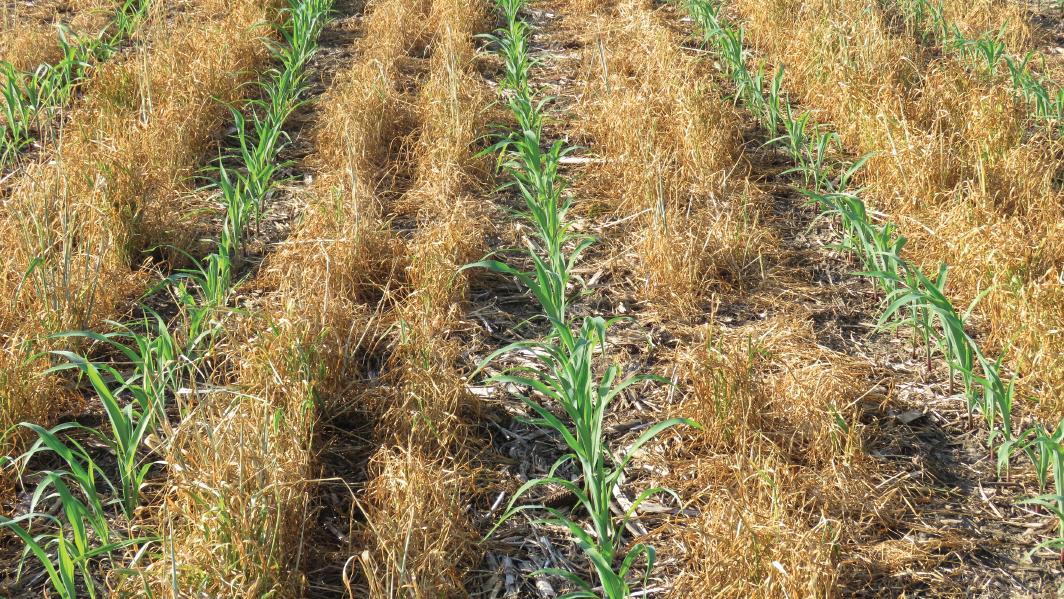
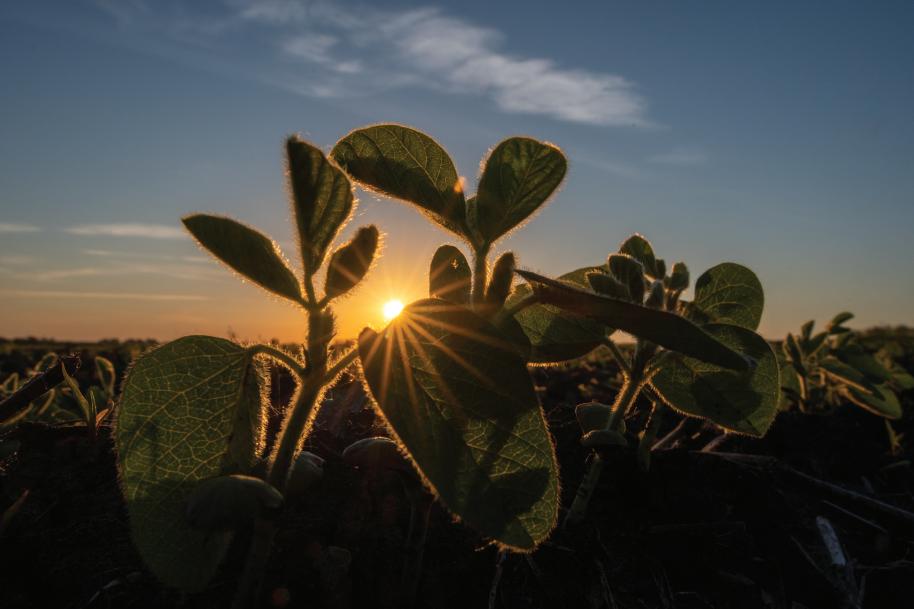















The Kansas Soybean Commission implemented a new engagement activity available for FFA chapters, 4-H members and teachers around Kansas called Beans Make Bacon. The hands-on activity allows participants to gain an understanding of how pigs rely on the
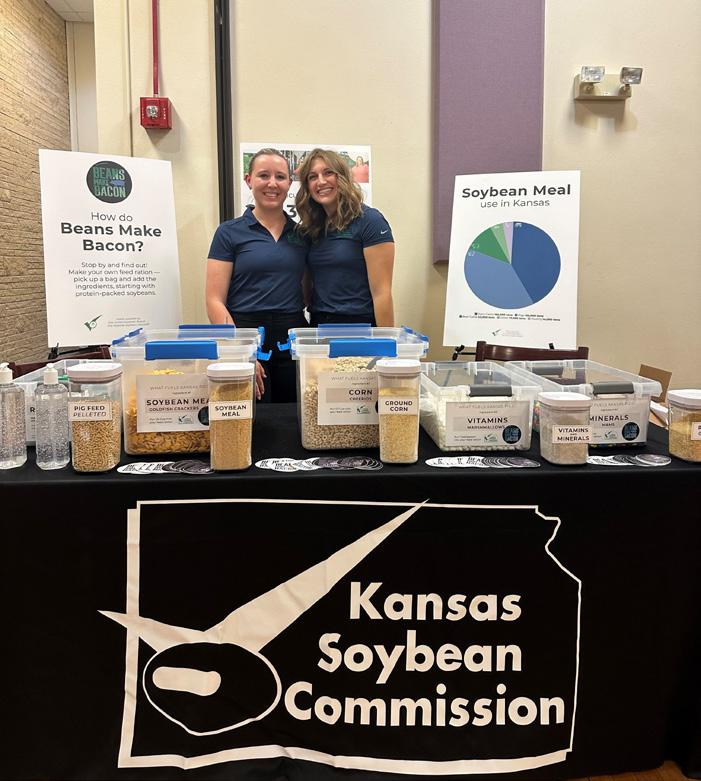
amino acids found in soybean meal as an energy source to grow. Soybeans can be used as a protein source in livestock’s diet such as fish, pigs, dairy cattle and beef cattle.
Kansas Soybean staff took this activity on the road to Manhattan for the Kansas FFA State Convention and 4-H Discovery Days. During the two days of tabling, staff interacted with almost 3,000 people telling the story of how beans make bacon. Participants were encouraged to make their own snack mix and ask questions about soybeans and how they play a role in their day to day lives.
Teachers are also able to implement Beans Make Bacon into their own classrooms by signing up to receive a Beans Make
USDA projects the U.S. ag trade deficit to reach a record $30.5 billion for fiscal year 2024, which runs October 2023 to September 2024. This is an increase from $16.7 billion in fiscal year 2023. There are many factors that impact trade, including declining commodity prices and increased demand from consumers for imported products.
Economists believe there are multiple reasons for the trade deficit:
• Commodity prices have dropped, decreasing the value of U.S. exports.
• China lessened the import requirements on corn from Brazil, limiting the need for U.S. corn in China.
• Americans eat more fruits and vegetables now than they used to, and most of those products must be grown elsewhere to ensure affordable, fresh produce is available year-round.
Closing the trade deficit will not be easy. Organizations like the U.S. Soybean Export Council and U.S. Meat Export Federation work to expand into new markets in hopes to bridge the gap.
Bacon activity guide. The Kansas Soybean Commission will provide instructions on how to correctly prepare the activity for the classroom. Included with the guide will be Beans Make Bacon stickers and table signs.
The Beans Make Bacon campaign’s goal is to reach as many people as possible. It illustrates how soybeans connect to animal agriculture in a sense people can easily understand. From the field to a plate, soybeans provide proper nutrition not only for animals, but they also are a valuable component for human diets.
Farmers play a crucial role in conservation by implementing practices that enhance plant wellness and preserve environmental resources. The American Soybean Association is accepting applicants for the 2025 Conservation Legacy Awards.
ASA created the Conservation Legacy Awards to highlight farmers who embrace innovative conservation practices on their operation and honor their achievements enhancing sustainability in modern agriculture. Practices used by previous winners include no-till, cover crops, buffer strips, solar energy and row spacing.
If you employ these types of stewardship practices on your land, consider applying now for the 2025 ASA Conservation Legacy Awards. Winners are selected from four regions – the Midwest, Upper Midwest, Northeast and South. The farmers that receive this award earn a trip to Commodity Classic, a magazine feature and an on-farm video feature. Find more information and apply by Aug. 15 at soygrowers.com/conservation-legacy/.

INCREASED DIGESTIBILITY FOR DECREASED DIET COSTS
Feed swine 24.4 lbs less feed when using ExPress® soymeal in diets. with
Dairy cows produce more milk per head per day



OR



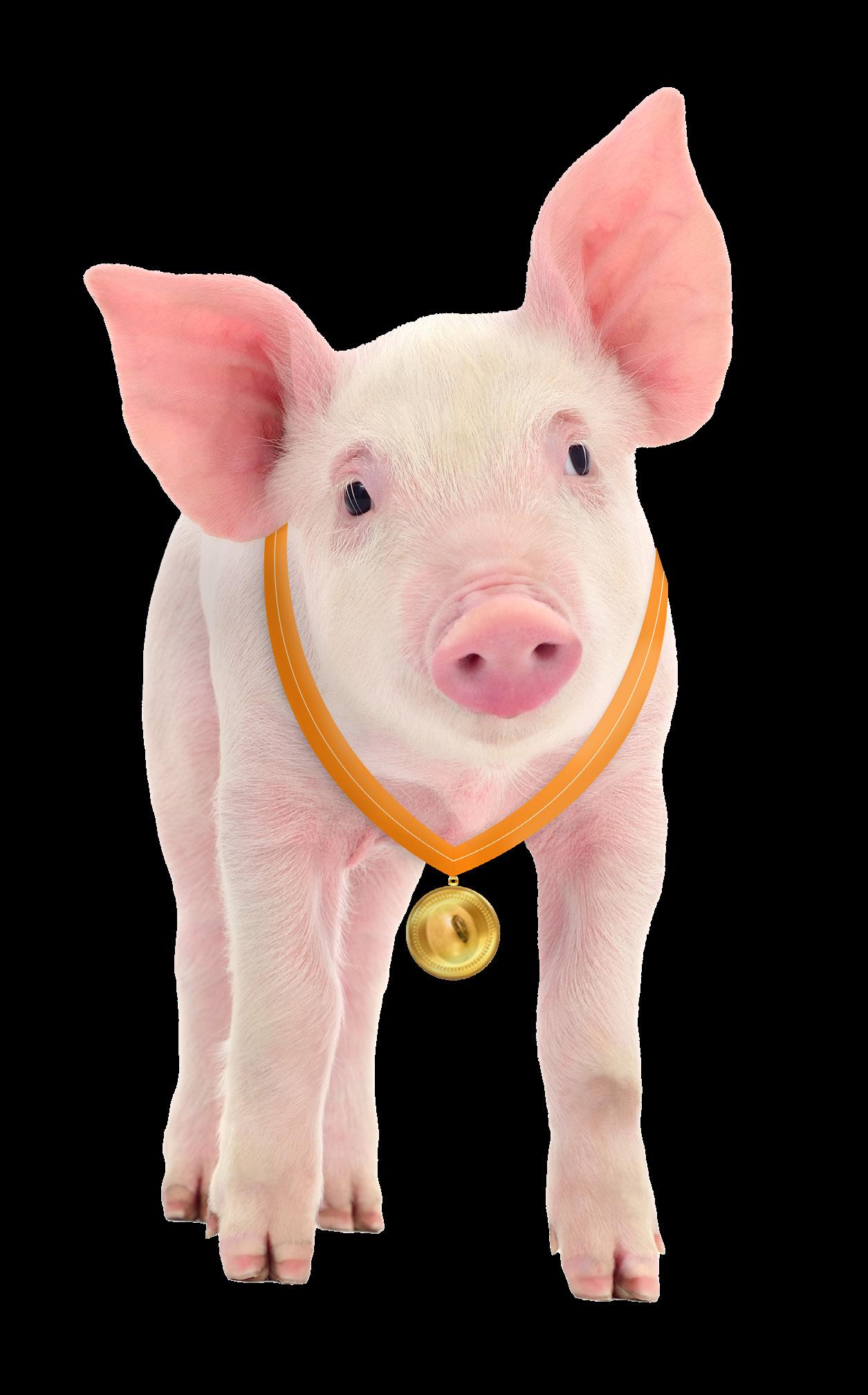
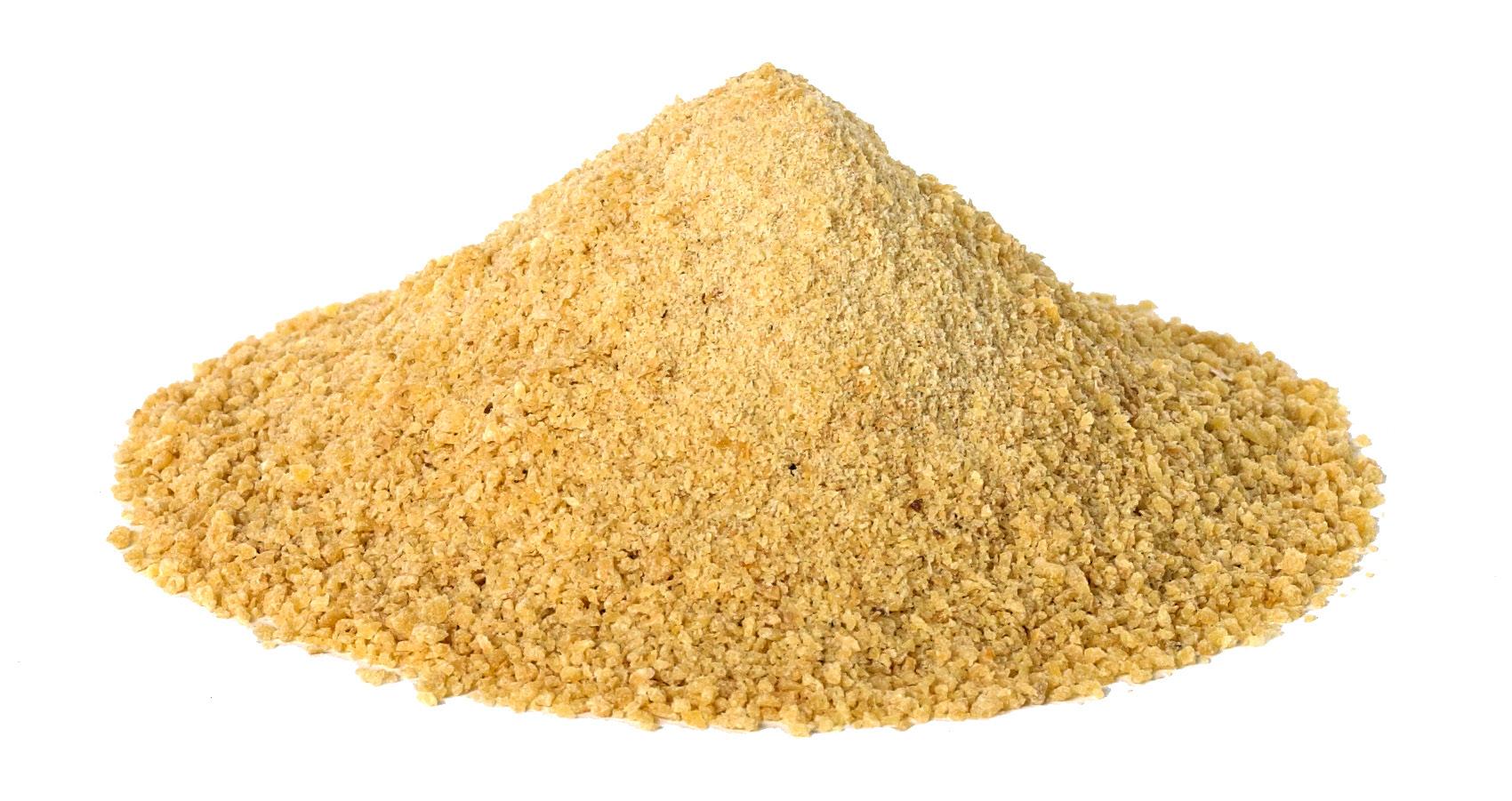
Water conservation has been a consistent hot topic as many areas in Kansas have suffered record drought over the past few years. A sufficient supply of clean, usable water is a vital component to success in agri-

culture. While farmers cannot control Mother Nature, conservation of water can be managed.
The Water Resources Development Act is a piece of legislation allowing the U.S. Army Corps of Engineers to conduct research, improve infrastructure in the nation’s ports, develop flood and storm protection and optimize inland waterway navigation.
Funding for this work is not included in the legislation and must be generated elsewhere. The American Soybean Association heavily focused on ensuring inland waterways projects were funded through the Infrastructure Investment and Jobs Act to use general revenue instead of Inland Waterway Trust Fund dollars.
The House Transportation & Infrastructure Committee approved the 2024 WRDA bill on June 25 without provisions for
With farmers representing less than three percent of the population, the Kansas Soybean Association values partnership to reach policy goals. The Modern Ag Alliance led by Bayer is a coalition focused on protecting U.S. farmers’ access to the crop protection tools they need to ensure a robust and affordable domestic food supply.
Farmers’ rights to crop protection tools is a policy priority for KSA and the American Soybean Association. Joining forces with those who have similar priorities amplifies the associations’ impact. Modern Ag Alliance aims to be the face of state legislative efforts like H.R. 4288, the Agricultural Labeling Uniformity Act.
The Modern Ag Alliance website serves as a landing page with information, resources and more for agriculturists. To learn more on the importance of crop protection products and the risks to the availability of these products, visit controlweedsnotfarming.com.
modernizing the inland waterways system. Fortunately, the Senate Environment & Public Works Committee passed its version of the bill in May, which permanently adjusts the inland waterways cost-share for construction and major rehabilitation projects to 75% general revenues (up from 65%) and 25% (down from 35%) Inland Waterways Trust Fund. Until this change, the 65/35 split would have run until 2031. While the change does not necessitate 100% general revenue funding, it more closely aligns with ASA’s policy priorities.
Both bills will go to their respective floors for a vote and then a formal conference to reconcile the two versions later this year. ASA, along with KSA will continue its advocacy to ensure favorable outcomes for our farmers.
In recent years, auto manufacturing companies began announcing new vehicle models without AM receiver, due to concerns receivers disrupt electromagnetic waves. For those in rural areas, AM radio is more than a station for music. It can be a lifeline for individuals without access to emergency information otherwise. In addition to the sense of safety, AM radio stations may strengthen communities by serving as a place to get hyper-local news and entertainment.
A group of bipartisan lawmakers introduced the AM Radio for Every Vehicle Act in May 2023 and it was passed four months later. This act directs the Department of Transportation to issue a rule that requires all passenger motor vehicles to have AM channels easily accessible to drivers.
The American Soybean Association and the Kansas Soybean Association supported this act along with other agriculture and rural groups like the Livestock Marketing Association and the Rural and Agriculture Council of America.
Corporate partners and advertisers are vital to the success of the Kansas Soybean Association. They provide the Association with financial support and link our state’s soybean farmers to the allied industries that provide inputs and capital to manage our enterprises. KSA also relies on corporate partners to keep us up-to-date with the latest breakthroughs in production technologies, and we all work together to create and implement environmental and trade policies that benefit the soybean industry.


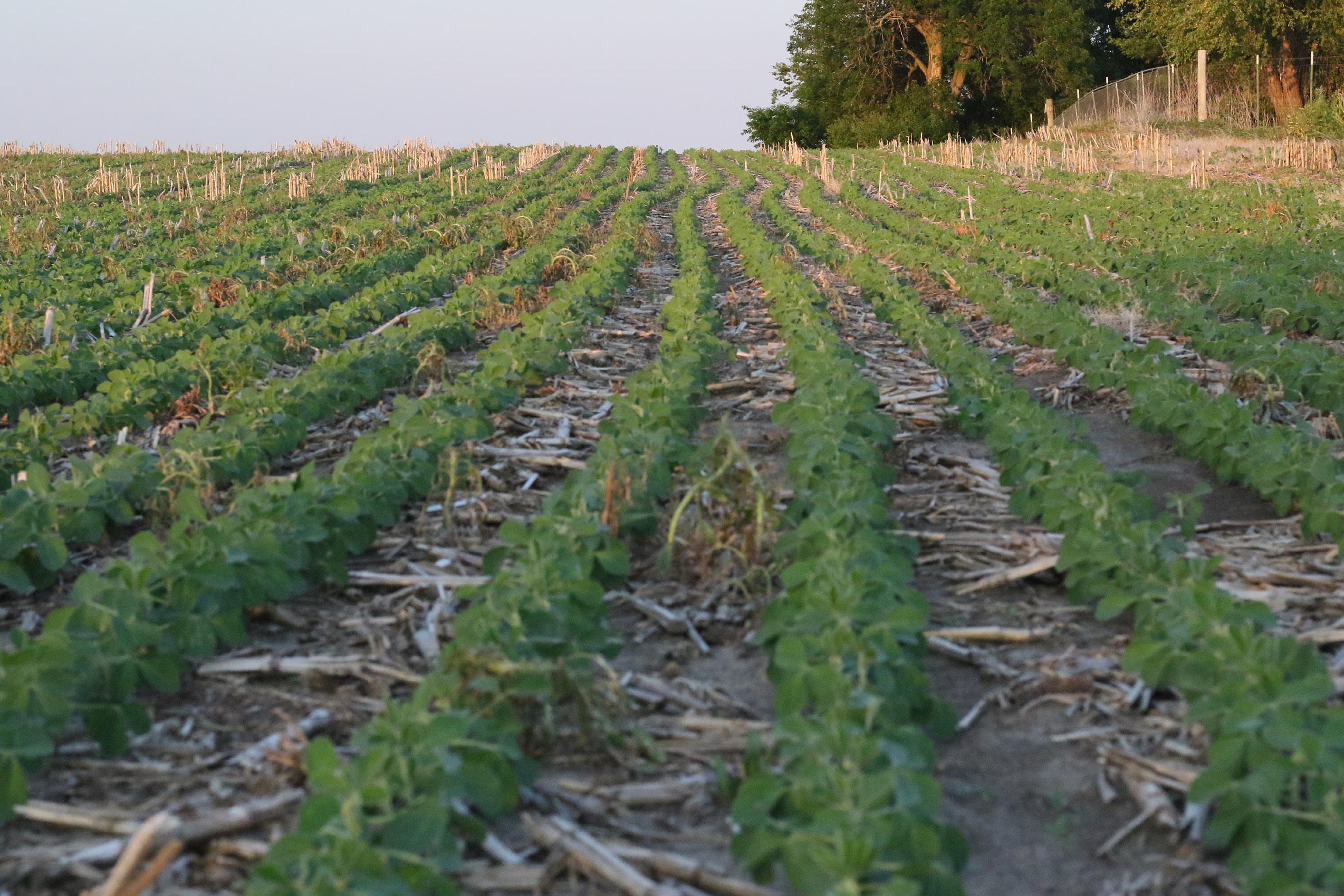

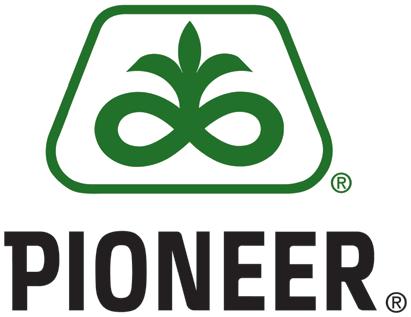




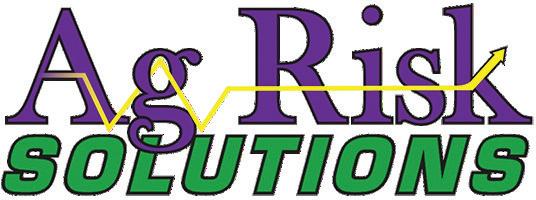
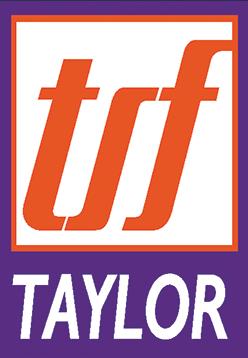

August
August
August 13
August 14
August 15-16
August 19-20
August 19-21
August
August
August 21
